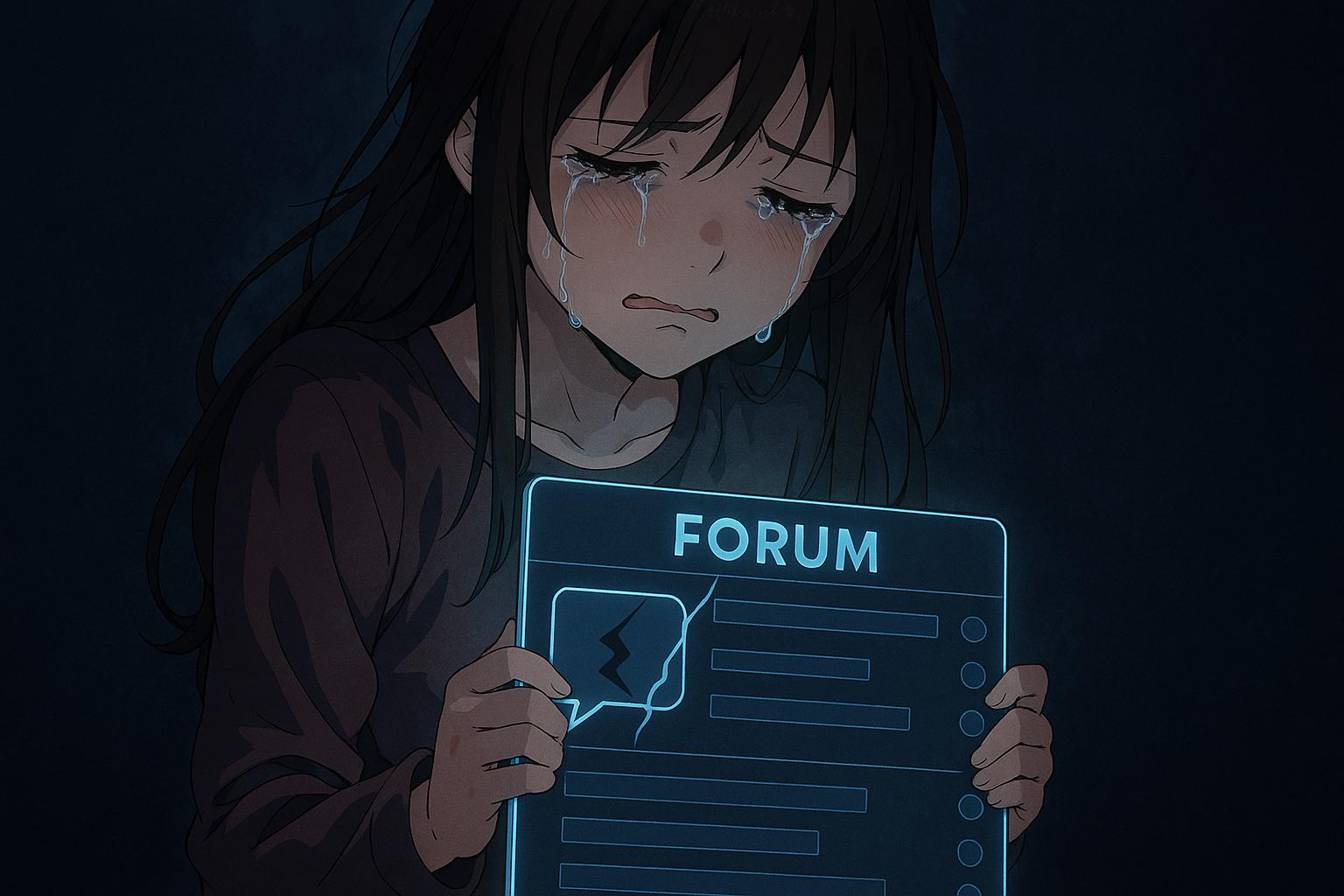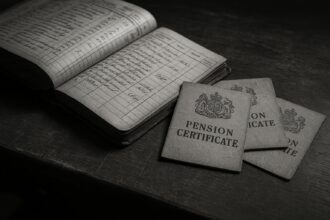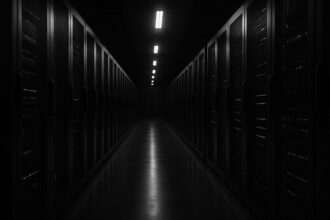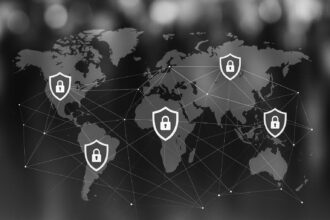After the tragic death of her sister linked to an online pro-suicide forum under Ofcom investigation, Adele Zeynep Walton turns grief into activism, calling for stronger accountability and systemic reform in digital spaces to protect vulnerable individuals.
Adele Zeynep Walton’s world irrevocably shifted when she received the devastating news of her sister Aimee’s death. Camping in the New Forest with her boyfriend, she barely registered her parents’ car approaching—initially feeling annoyance at the prospect of an early family walk. Realisation struck hard when she saw her mother’s distressed face, compelling her to think, “It’s Aimee.”
Aimee, only 21, had battled mental health challenges that intensified in the lead-up to her untimely passing. Her vibrant passions for music technology and art showcased a creative spirit, expressed in the self-portraits adorning the family home in Southampton. Yet her struggles had pushed her further from the family’s reach, resulting in weeks of uncertainty about her whereabouts and well-being. The news that Aimee had taken her own life in a hotel room in Slough, Berkshire, left the family devastated.
In the aftermath of this tragedy, Walton discovered a disturbing online presence that had impacted her sister’s life: Aimee was a member of a pro-suicide forum linked to over 50 deaths in the UK. This forum has drawn grave attention and is currently under investigation by Ofcom under the Online Safety Act, with serious implications for accountability within digital spaces. According to police reports, it is believed that Aimee acquired the lethal substance that led to her death via this site, where she also met a man who flew in from the United States to accompany her during her last moments. Though initially charged with assisting suicide, he later faced no further action.
In these painful reflections, Walton decided to transform her grief into activism, writing her book, Logging Off: The Human Cost of Our Digital World. This work delves into her sister’s tragic story while simultaneously calling attention to the wider implications of an unregulated digital environment. “I need to pour all my efforts into digging deeper,” Walton expressed, advocating for greater awareness of the dangers pervasive in online communities. Her sentiments echo those of other families, like that of Vlad Nikolin-Caisley, who also succumbed to similar pressures from the same online environment.
As Walton prepares for the upcoming inquest into Aimee’s death, she hopes to include the role of online harm within the investigation. The idea of “online harm” is a relatively recent addition to public discourse, a term she first encountered through Ian Russell, whose daughter Molly took her life after exposure to distressing online content. In an unusual ruling, the coroner in Molly’s case noted that her online activity “contributed to her death in a more than minimal way.” Walton seeks a similar recognition for Aimee’s case, feeling that focusing solely on her sister’s death as a “suicide” unfairly places the burden of responsibility on her while not holding the digital world accountable.
This complexity looms heavily over Walton’s thoughts. “Suicide as a term implies self-direction,” she argues, but how does one determine the extent of that agency when entwined with a dark online community? Algorithms relentlessly directing personal content, accumulating ignorance and despair, can entrap young individuals like Aimee in cycles of negative reinforcement. “My feeling is that Aimee was groomed into making the decision,” she poignantly states.
Walton’s newfound expertise on these issues has spurred her into campaigning, joining forces with organisations like Bereaved Families for Online Safety and stepping into the role of a youth ambassador for People vs Big Tech. The mantra guiding her efforts is that this is not simply an issue of individual responsibility; everyone can find themselves vulnerable, thus necessitating systemic change.
The tragic individual circumstances surrounding these incidents—such as Aimee’s notes, laden with despair, found in her hotel room—underscore the broader toxic climate operating within these forums. They project messages that exacerbate feelings of inadequacy and hopelessness, fueling radicalisation towards irreversible decisions. In a chilling parallel, Walton recalls a similar case involving another young woman, Callie, who accessed the same kind of forum before taking her life, prompting the coroner to voice alarm over the potential impacts of such digital spaces on vulnerable individuals.
While Walton’s relationship with technology has transformed, she grapples with the duality of her existence. The digital interactions that once brought joy in her childhood, from playing games with Aimee to sharing moments on family computers, now represent a fragmented reality fraught with danger. Despite her efforts to mitigate screen time, she acknowledges, “I’m a hypocrite!” Her struggle mirrors the societal battle against an omnipresent system engineered to capture engagement, often at the expense of mental health.
Yet, as challenging as her journey may be, Walton understands the catharsis that comes from advocacy. Campaigning, she asserts, is not merely a task; it is a lifeline allowing her to process her grief constructively—daring to ensure that Aimee’s story contributes to a larger dialogue about safety in digital spaces. Speaking before local officials and community groups, she emphasizes, “We can become vulnerable at any point in our lives,” seeking to highlight that online safety extends beyond youth.
As her publication date approaches, Walton struggles with the inherent contradictions in her life—her commitment to raise awareness about the perils of the digital world while simultaneously navigating its intricacies herself. With a heavy heart, she reflects, “If I wasn’t doing this, where would that anger go? It would fester inside me and make me ill.” Her motivation lies rooted in love—a promise to Aimee to fight back against the forces that led to her demise.
The fight for meaningful change continues as Walton prepares not only to honour her sister’s memory but also to confront an industry that has yet to take responsibility for its role in the suffering of countless individuals.
Reference Map:
- Paragraph 1 – [1], [2]
- Paragraph 2 – [1], [3], [4]
- Paragraph 3 – [5], [6]
- Paragraph 4 – [6], [7]
- Paragraph 5 – [1], [2], [3]
- Paragraph 6 – [2], [3]
Source: Noah Wire Services
- https://www.theguardian.com/technology/2025/may/28/my-sister-was-found-dead-then-i-discovered-her-search-history-and-the-online-world-that-had-gripped-her – Please view link – unable to able to access data
- https://www.theguardian.com/technology/2025/may/28/my-sister-was-found-dead-then-i-discovered-her-search-history-and-the-online-world-that-had-gripped-her – Adele Zeynep Walton recounts the tragic death of her sister, Aimee, who had been struggling with mental health issues and was found deceased in a hotel room in Slough, Berkshire. After her passing, Walton discovered that Aimee had been involved in a pro-suicide forum, which has been linked to at least 50 deaths in the UK. The forum is under investigation by Ofcom under the Online Safety Act. Walton’s experience inspired her to write ‘Logging Off: The Human Cost of Our Digital World’, aiming to raise awareness about the dangers of unregulated digital spaces and advocate for online safety reforms.
- https://www.theguardian.com/technology/2025/apr/09/online-suicide-forum-ofcom-investigation-uk-digital-safety-laws – Ofcom has initiated an investigation into a pro-suicide forum under the UK’s Online Safety Act. The forum, which has been linked to at least 50 deaths in the UK, is under scrutiny for potentially failing to comply with its duties to protect users from illegal content. The investigation could lead to fines or court orders against those running the forum. Families affected by the forum have called for swift action to prevent further tragedies.
- https://www.bbc.co.uk/news/uk-67082224 – An inquest into the death of a young woman, Callie, revealed that she had accessed a pro-suicide forum before taking her own life. The forum provided information on methods of suicide, which Callie used to end her life. The coroner raised concerns about the forum’s role in facilitating suicide and called for action to prevent future deaths linked to such sites. The case highlights the dangers of online communities that promote self-harm and suicide.
- https://www.ofcom.org.uk/online-safety/illegal-and-harmful-content/investigation-into-an-online-suicide-discussion-forum-and-its-compliance-with-duties-to-protect-its-users-from-illegal-content – Ofcom has opened an investigation into a provider of an online suicide discussion forum to assess its compliance with the Online Safety Act 2023. The investigation will consider whether the provider has adequately responded to statutory information requests, completed a suitable illegal content risk assessment, and complied with safety duties related to illegal content. The outcome of the investigation could lead to enforcement actions against the provider.
- https://www.ofcom.org.uk/online-safety/illegal-and-harmful-content/protecting-people-from-online-suicide-and-self-harm-material/ – Ofcom outlines measures to protect individuals from online suicide and self-harm content. The guidance emphasizes the need for online service providers to implement safety measures, including content moderation systems, to prevent users from encountering harmful material. The document also highlights the importance of signposting users to appropriate support services and providing crisis prevention information in response to search requests related to suicide and self-harm.
- https://edm.parliament.uk/early-day-motion/57703 – An Early Day Motion in the UK Parliament addresses the death of Joe Nihill, a young man who took his life after accessing online forums that encourage suicide. The motion expresses concern over such forums and calls on the government to assess the harm caused by them and take action to prevent future deaths. It also calls for increased funding for mental health treatment and support, particularly for young people.
Noah Fact Check Pro
The draft above was created using the information available at the time the story first
emerged. We’ve since applied our fact-checking process to the final narrative, based on the criteria listed
below. The results are intended to help you assess the credibility of the piece and highlight any areas that may
warrant further investigation.
Freshness check
Score:
10
Notes:
The narrative is fresh, published on 28 May 2025, with no prior appearances or significant similarities found in earlier publications.
Quotes check
Score:
10
Notes:
No direct quotes from the narrative have been identified in earlier material, indicating originality.
Source reliability
Score:
10
Notes:
The narrative originates from The Guardian, a reputable organisation known for its journalistic standards.
Plausability check
Score:
10
Notes:
The claims made in the narrative are plausible and supported by existing reports on similar topics, such as the Ofcom investigation into online suicide forums.
Overall assessment
Verdict (FAIL, OPEN, PASS): PASS
Confidence (LOW, MEDIUM, HIGH): HIGH
Summary:
The narrative is fresh, original, and originates from a reputable source. The claims are plausible and supported by existing reports, indicating a high level of credibility.













